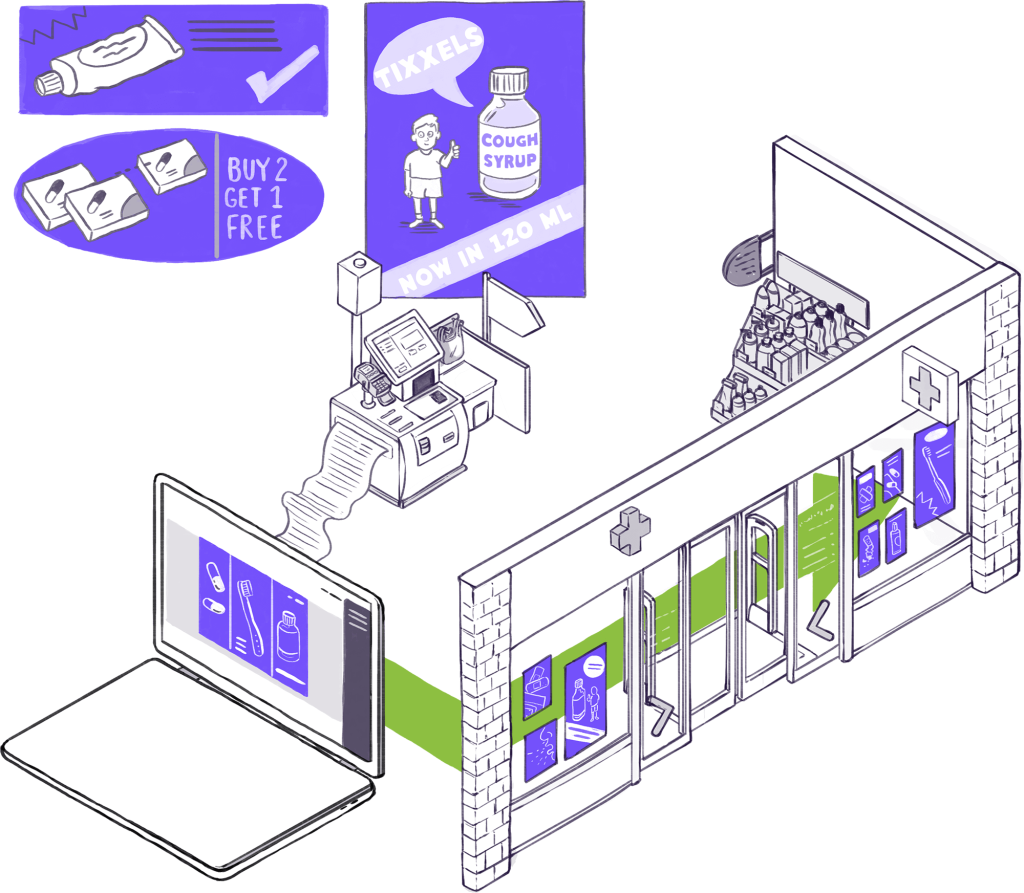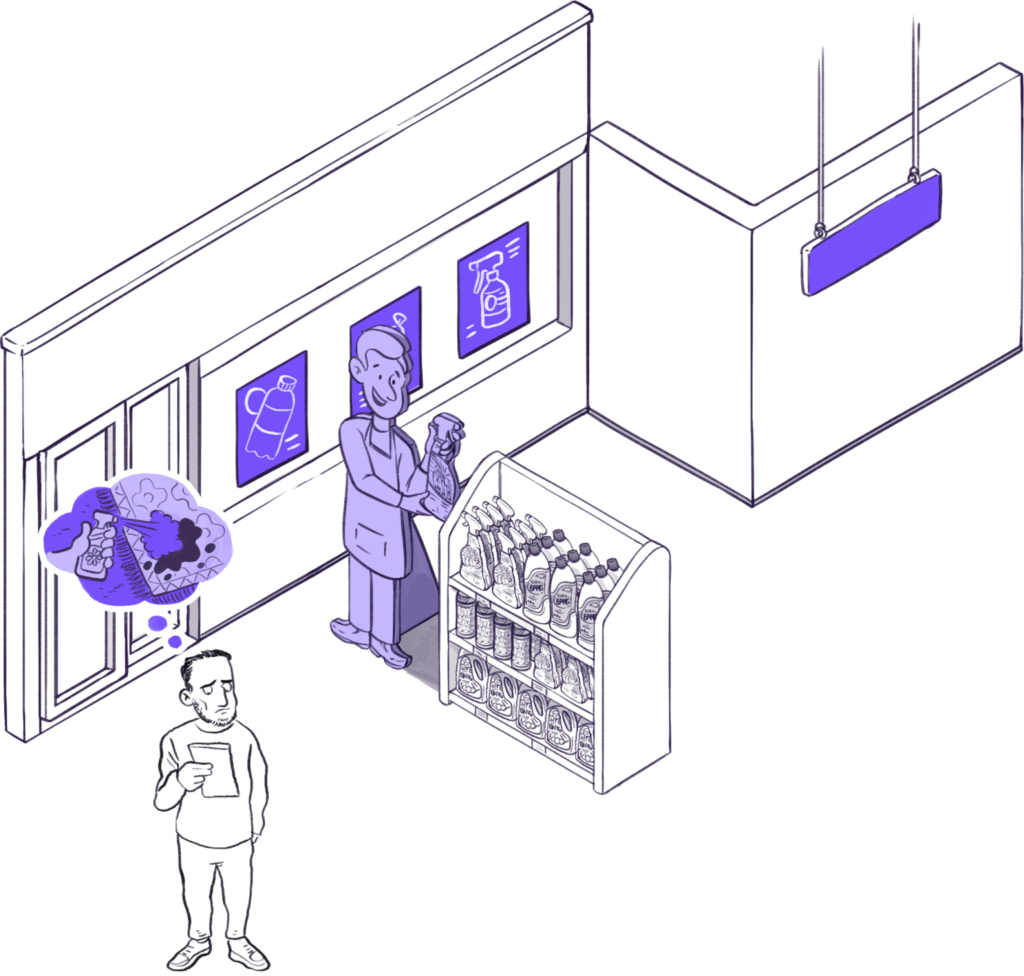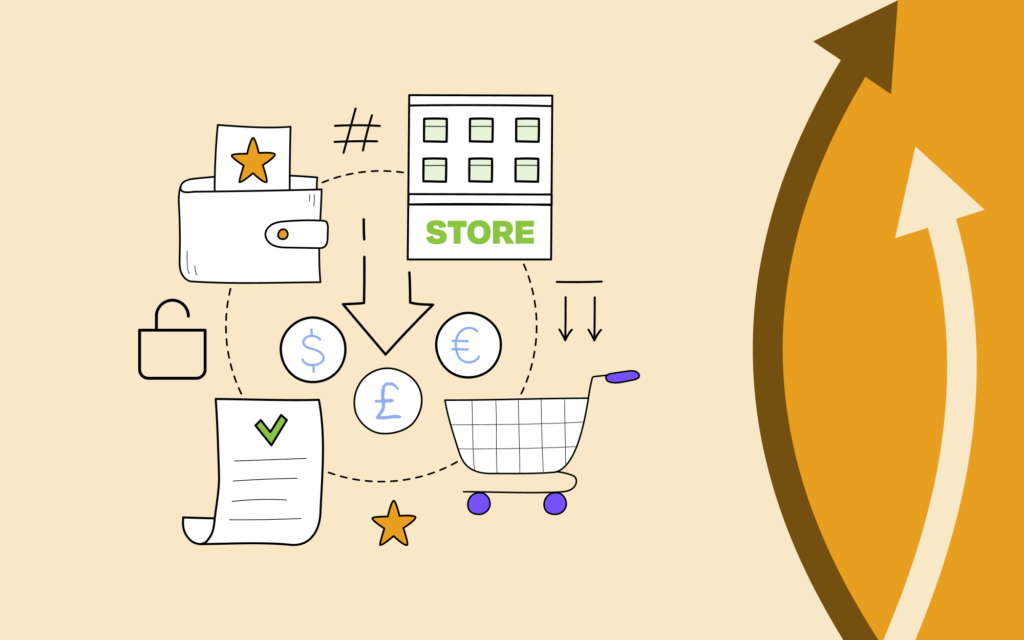Impulse buying: Using in-store marketing to boost spontaneous purchases


Impulse buying is that irresistible urge to purchase something even though you had no intention of doing so when you entered a physical or online store. These unplanned purchases are rooted in temptation, self-gratification, soothing our emotions, and making perceived cost or time savings. They tend to make us feel good, satisfied or ‘better’. And, often, we don’t even realise we’re making them.
Encouraged with marketing tactics, they are a great way for retailers to clear old or surplus stock, encourage additional purchases, increase basket size and boost sales.
So, how often do consumers impulse buy, and how important are they to your retail business? How can you use marketing to drive more of them in your stores? This blog has everything you need to know.
Impulse buying is the process of a customer buying an item, or additional items, spontaneously without previous planning or consideration. These purchases are encouraged with in-store marketing tactics, including product positioning, emotive messaging and promotions. Impulse buys are commonly located at checkouts and other high footfall or waiting areas in stores.
There isn’t a perfect recipe to get a person to purchase something they hadn’t intended to buy. However, there are several ways you can design both your store layouts and marketing materials to encourage this behaviour.

Spontaneous and driven by temptation and emotion
It’s estimated that impulsive purchases make up between 40% and 80% of retail sales. Mr Muhtar Kent, the CEO of Coca-Cola, apparently attributed more than 70% of its sales to impulse buys.
And they’re more likely to happen in stores. A recent study by Kantar looked at shoppers in-store and online during their shopping journey. It found that two-thirds of shoppers made an impulse purchase across store-based retailers. And over two-thirds of those buyers bought more than one item impulsively.
Although a decrease vs previous years (unsurprising with the rising cost of living), a survey by Slickdeals revealed the average American shopper spends more than $150 a month on spontaneous purchases. And 91% of Brits admit to making impulse buys every month. It’s an opportunity worth tapping into.
So what makes shoppers buy impulsively?
In-store impulse purchases are driven mainly by a desire to treat oneself (37% overall and 45% for Gen Z respondents), according to a survey by Ipsos. This is followed by the price being too good to pass up (33%) and something looking too good to pass up (25%).
This survey also found that nearly 20% of the respondents’ most recent in-store impulse purchases were bought after seeing it on a display. Others made impulse buys when the products were in their usual aisle, in a special location or sale bin, at the store entrance or at check-out.
Multiple studies have found a positive relationship between impulse buying and promotional activities. And, with 80% of shoppers actively looking for deals, it’s no surprise that good value and offers, as well as providing a feel-good factor, are the common driving forces behind these purchases.
This leads us nicely on to…
Where you position your impulse buys is critical to their success. Studies have shown that promotions are particularly effective near check-outs and other areas with increased dwell time – such as waiting areas and ends of aisles.
There might be certain areas in your stores that are hot spots for impulse buys, so make sure to get feedback from your store teams about which locations are most effective.
Location management tools can simplify your in-store marketing activities by providing an online space to store, access and update detailed information about every store, and the available spaces within them. So, when planning your campaigns, you can ensure your product displays are always positioned in the perfect setting.
While the products you choose to encourage impulse buys may be dictated by surplus or old stock, it’s still important that they are shown to be of great value.
Research on Value and Price Messaging by POPAI UK & Ireland found that shoppers are more attracted to messaging about value and savings. And content focusing on price reductions and quantity discounts attracts fewer shoppers than those offering extra products.
In fact, their research revealed that 50% of shoppers engaged with messaging related to extra free products and competitions, compared to just 37% with messages on price reduction.
A brilliant way to harness more impulse buys is with complementary (or cross) merchandising. This is positioning items used or associated with each other side by side or within proximity. For example, having crisps next to dips, wrapping paper near cards, batteries by children’s toys … the list is endless.
You can group items based on anything from logic (for example, shampoo and conditioner) to the seasons, weather, holidays, events, or special occasions. For additional selling power, you can display complementary items on offer.
And you can use your marketing materials to further draw attention to complimentary items, with messaging we are used to seeing online, such as “People also buy…”, or “Don’t forget your..”.
As well as increasing basket size, another huge benefit of displaying items in this way is it is actually highly convenient for shoppers and helps to improve their overall shopping experience.
Be creative and experiment with different product bundles and messaging. Then, interrogate the data and use it to improve your future displays and campaigns.

Research has found that window displays, floor merchandising and promotional signage all have a positive and significant impact on customers’ impulse buying behaviours.
A recent study looking at the sales effect of in-store product displays found that the total relocation of products to an in-store display near the checkout area increased sales from 79.7% to 478%. Yes, you read that right, 478%!
Therefore, signage is critical to ensure your marketing and displays have the biggest impact. Depending on your campaign and promotion, different displays will be more effective. We break down each type of display and when to use them in this article.
Whichever option you choose, it’s important to ensure your planned promotions go live when, how and where you intended. We call this display compliance. While many marketers invest a lot of time in planning campaigns, it can be a bit of a black hole when promotions go live in stores. Check out our recent survey results, which revealed the five steps retail marketers implement to ensure their promotions are installed correctly and in the right places.
Messaging is critical too, but we’ll talk more about using your in-store marketing messaging to increase impulse buying later.
Ensuring relevance is about promoting products specifically appropriate for local customers and the area. For example, planning offers on sunglasses at the entrances of your beach town stores or stationery in your university locations. This not only encourages impulse buys but also improves the store experience for shoppers.
With the right technology, you can increase impulse buying by adjusting your marketing and promotions according to local events or even the weather. After all, who hasn’t impulsively purchased an umbrella after being hit by unexpected rain? To achieve this kind of precise targeting, comprehensive store profiling, control of marketing material allocations, and real-time communication with store teams are essential.
Sensory experiences in stores are something that online shopping cannot replicate. The store atmosphere, layout, and displays are likely the reason that more impulse buying happens in physical locations.
From wafting the smells of freshly baked bread or designer fragrances through stores, to using certain colours on the walls and offering samples, engaging the senses has been found to have a strong impact on impulse buying.
One study even found that playing different types of music in the wine aisle of a supermarket had some interesting results. French music resulted in more French wine being bought. And, German music saw more German wine purchased!
Plan every detail of your customer’s journey through your stores and, make sure you are engaging their senses in an enjoyable and relevant way.

To help shoppers decide to buy quickly, you can use the following in your marketing:
From instant gratification to easing frustration, emotions are key in impulse buying. In fact, the Slickdeals survey found that 61% of shoppers said randomly buying something helps them feel happy or better about a bad day!
Using emotive language can quickly capture the attention of shoppers, whether they are celebrating or cheering themselves up. A great example of this is Coca-Cola’s ‘Choose Happiness’ campaign in 2015.
Providing all the information shoppers need at a glance can speed up their decision-making process. Give clear and succinct product details and highlight the top benefits.
Other factors that encourage quick purchases include:
It’s human nature to want to be part of something and to imitate the behaviours of people around us. You can use this to your advantage in marketing materials to give your customers FOMO (Fear Of Missing Out)! Include statistics by your impulse buys like “99% of customers loved this” and “5-star reviews” to add further appeal to your products.
While your physical stores can’t share real-time messaging like “200 people have this in their basket right now” (that we’re used to seeing online), in-store marketing materials can include sales statements, such as “More than 20 million sold worldwide” to evidence their popularity and encourage sales.
Utilise your store staff to further promote items. Whether it’s asking if people want to purchase additional items at check out, to letting people know of current offers and suggesting great complimentary items to things already in their hands or baskets. This verbal marketing can really make a difference in securing extra sales.
In summary, harnessing the power of impulse buying in your stores can quickly have a positive impact on basket size and sales. If you combine emotive messaging with tempting, timely deals, well-planned store layouts, product displays, and fantastic employee advocacy, you’ll likely have the recipe for success.
To master impulse purchases fully, in-store marketing tools like Colateral can ensure every message is in your stores in the right place at the right time and ensure that they are always relevant to the local customer base.
Want more marketing insights delivered to your inbox? Sign up to our email newsletter here.
 Retail, Thought Leadership
Retail, Thought Leadership
Investing in in-store retail media can be daunting for retailers. Why? Because digital channels can...
 Retail, Thought Leadership
Retail, Thought Leadership
It’s crucial to be able to manage the volume and quality of branded media from...